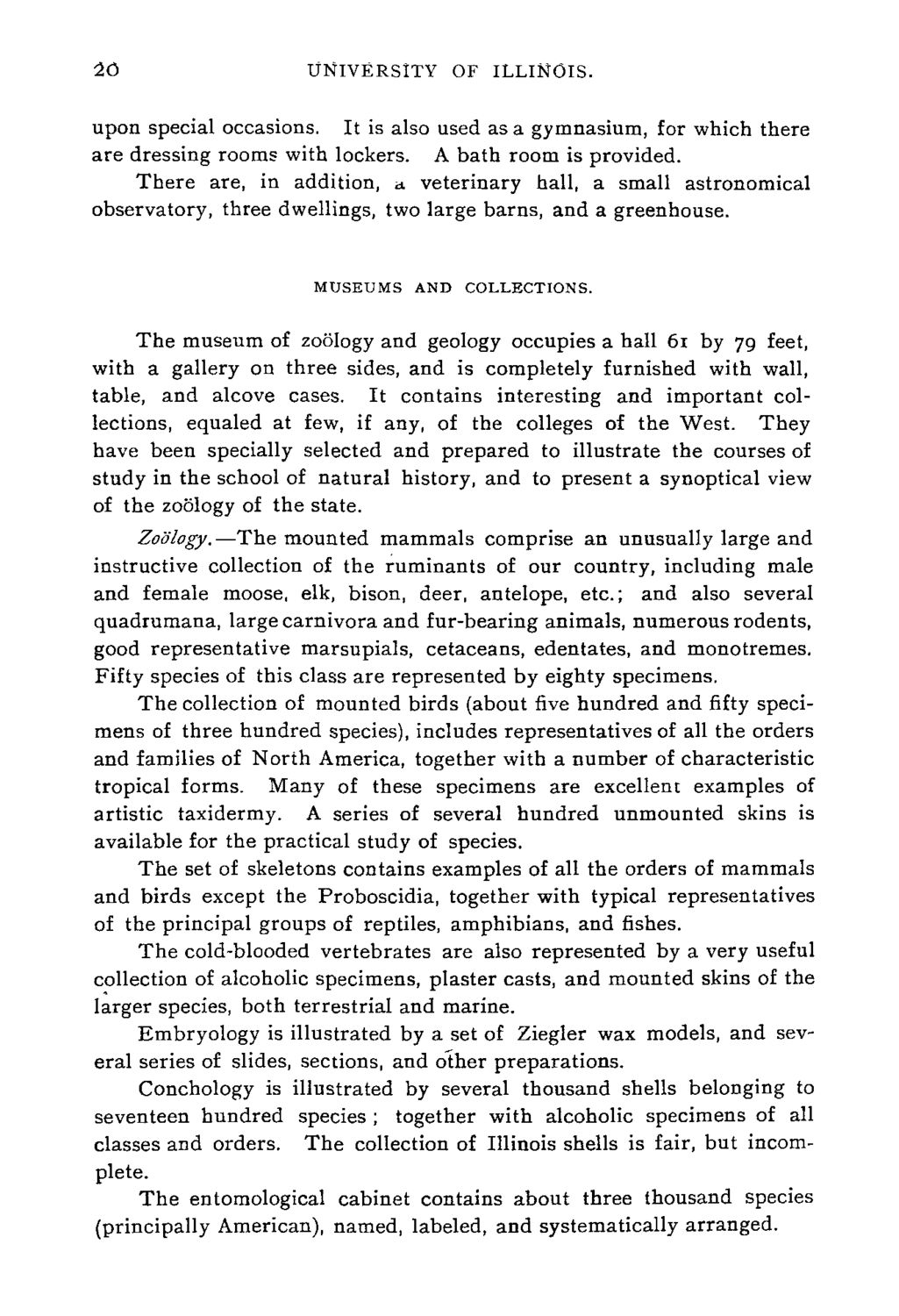| |
| |
Caption: Course Catalog - 1892-1893
This is a reduced-resolution page image for fast online browsing.

EXTRACTED TEXT FROM PAGE:
20 UNIVERSITY OF ILLINOIS. upon special occasions. It is also used as a gymnasium, for which there are dressing rooms with lockers. A bath room is provided. There are, in addition, a veterinary hall, a small astronomical observatory, three dwellings, two large barns, and a greenhouse. MUSEUMS AND COLLECTIONS. The museum of zoology and geology occupies a hall 61 by 79 feet, with a gallery on three sides, and is completely furnished with wall, table, and alcove cases. It contains interesting and important collections, equaled at few, if any, of the colleges of the West. They have been specially selected and prepared to illustrate the courses of study in the school of natural history, and to present a synoptical view of the zoology of the state. Zoology.—The mounted mammals comprise an unusually large and instructive collection of the ruminants of our country, including male and female moose, elk, bison, deer, antelope, etc.; and also several quadrumana, large carnivora and fur-bearing animals, numerous rodents, good representative marsupials, cetaceans, edentates, and monotremes. Fifty species of this class are represented by eighty specimens. The collection of mounted birds (about five hundred and fifty specimens of three hundred species), includes representatives of all the orders and families of North America, together with a number of characteristic tropical forms. Many of these specimens are excellent examples of artistic taxidermy. A series of several hundred unmounted skins is available for the practical study of species. The set of skeletons contains examples of all the orders of mammals and birds except the Proboscidia, together with typical representatives of the principal groups of reptiles, amphibians, and fishes. The cold-blooded vertebrates are also represented by a very useful collection of alcoholic specimens, plaster casts, and mounted skins of the larger species, both terrestrial and marine. Embryology is illustrated by a set of Ziegler wax models, and several series of slides, sections, and other preparations. Conchology is illustrated by several thousand shells belonging to seventeen hundred species ; together with alcoholic specimens of all classes and orders. The collection of Illinois shells is fair, but incomplete. The entomological cabinet contains about three thousand species (principally American), named, labeled, and systematically arranged.
| |